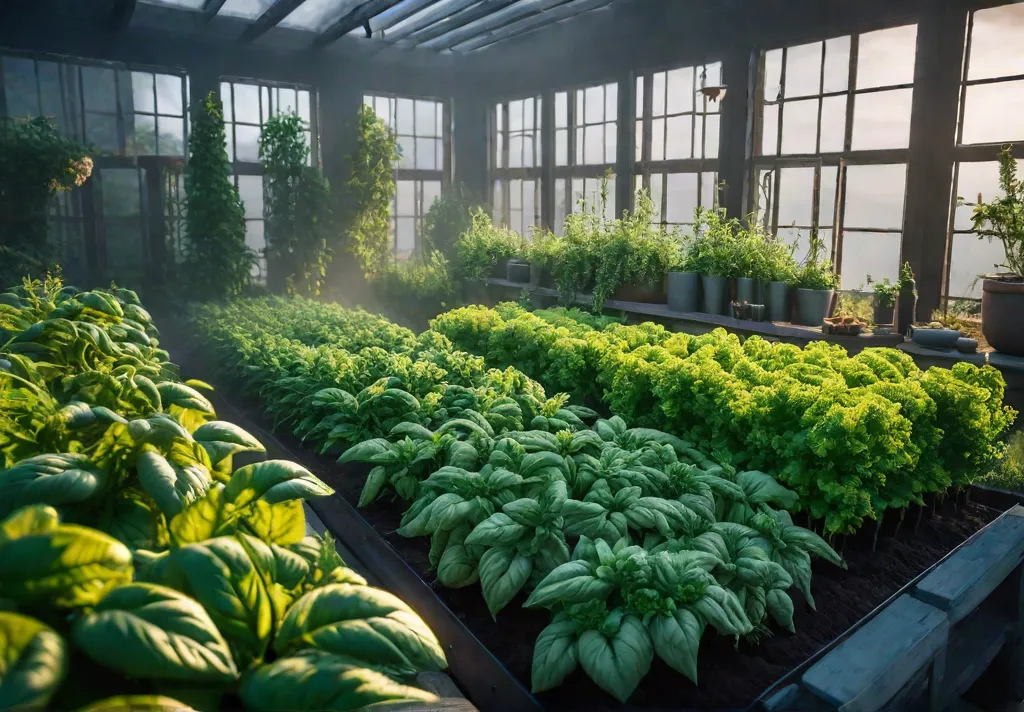Imagine stepping out into your lush, thriving vegetable garden, the sun-ripened tomatoes glistening, the fresh basil leaves releasing their aromatic fragrance. This isn’t just a dream – it’s the reality that companion planting can help you achieve!
As a true Southern belle, I’ve always been passionate about creating beautiful, productive gardens that blend elegance and functionality. One of the secrets to my success is the strategic pairing of different plants to create a harmonious, high-yielding ecosystem.
Companion planting is growing various vegetables, herbs, and flowers together to enhance their growth, deter pests, and attract beneficial insects. By understanding the natural relationships between plants, you can harness Mother Nature’s power to create a thriving, low-maintenance garden.
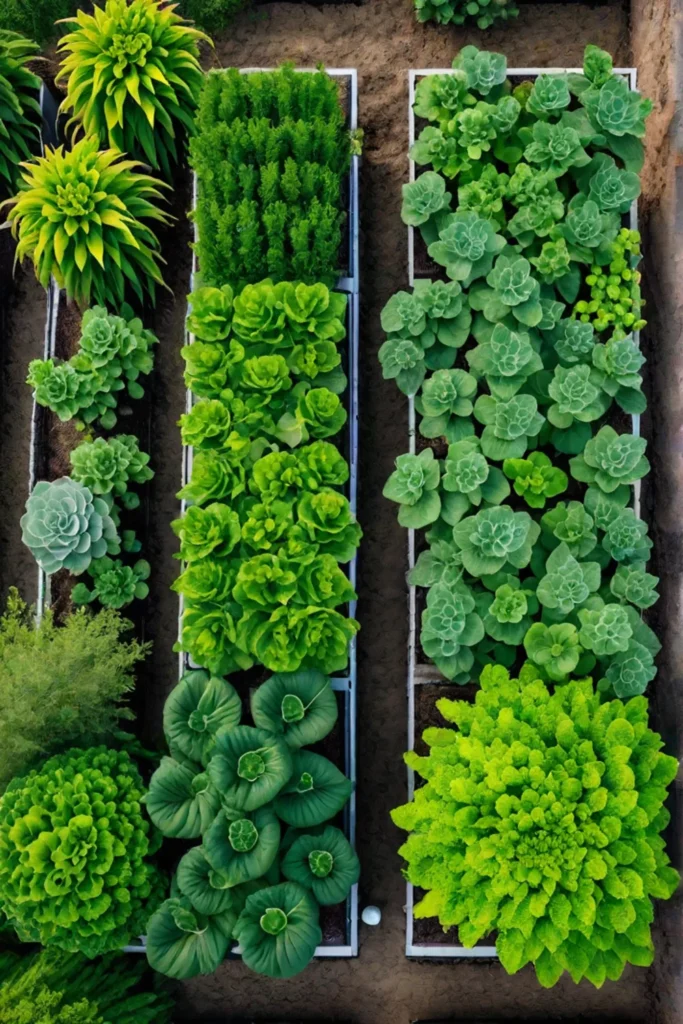
In this article, I’ll share five of my favorite companion planting pairs that can take your vegetable garden to new heights. Get ready to say goodbye to pesky pests, welcome in the pollinators, and enjoy a bountiful harvest all season long!
Tomatoes and Basil: A Classic Pairing
Regarding companion planting, tomatoes, and basil are a match made in heaven. These two culinary stars complement each other’s flavors and work together to protect one another in the garden.
Basil is a natural pest deterrent, thanks to its intense aroma that helps repel aphids, spider mites, and even the dreaded tomato hornworm. By planting basil around your tomato plants or interspersing it throughout the bed, you can create a natural barrier against these common pests.
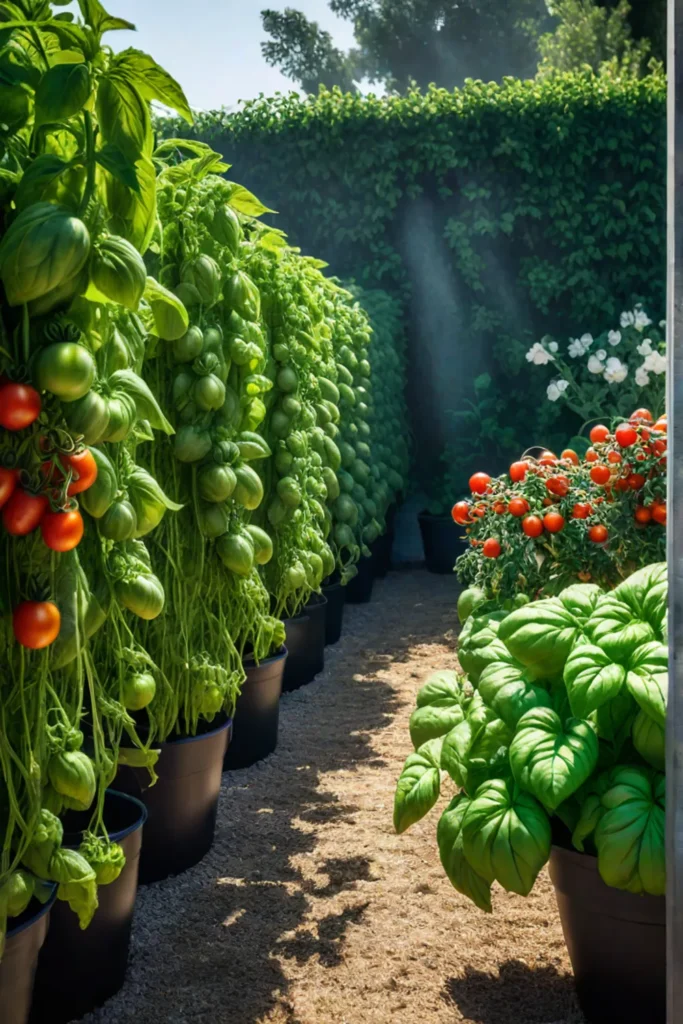
Conversely, tomatoes can help protect your basil from its own set of munching insects, like slugs and snails. It’s a win-win for both crops!
Moreover, tomatoes and basil are both nightshade family members, which means they share similar growing requirements. Planting them side by side allows them to thrive in the same conditions, making your job as a gardener much easier.
Marigolds: Versatile Pest Fighters
If there’s one companion plant that deserves a spot in every vegetable garden, it’s the mighty marigold. These vibrant flowers are true multitaskers, offering a range of benefits to your crops.
Marigolds are renowned for their pest-repelling properties. They contain natural compounds that deter nematodes, aphids, and other common garden pests. By planting marigolds around the perimeter of your garden or interspersing them throughout your vegetable beds, you can create a natural barrier against these unwanted visitors.
But marigolds’ benefits don’t stop there. These cheerful flowers also attract beneficial insects like ladybugs and lacewings, which feed on the pests that would otherwise wreak havoc on your plants. It’s a win-win for your garden’s ecosystem.
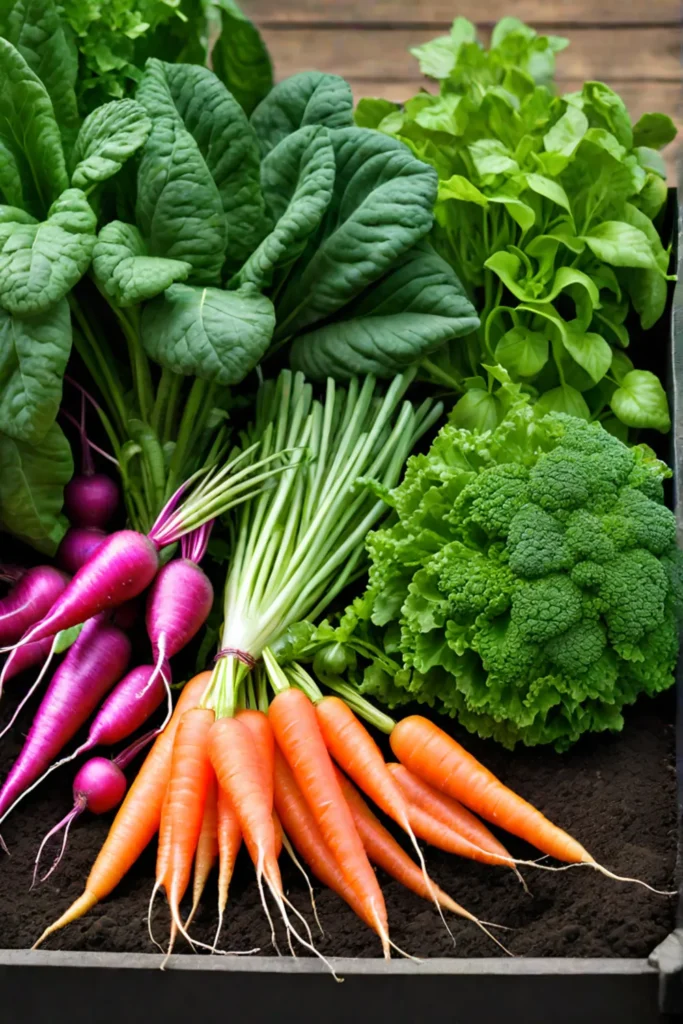
Moreover, marigolds come in various sizes and colors, making them a visually appealing addition to any vegetable garden. Whether you opt for the bold African marigolds or the delicate signet varieties, these flowers will add color and personality to your growing space.
Carrots and Radishes: A Dynamic Duo
Another dynamic duo in companion planting is carrots and radishes. These two root vegetables may seem unlikely, but their synergistic relationship can lead to healthier, more productive plants.
Radishes, with their fast-growing nature, can help loosen the soil and break up any compaction, which benefits the slower-growing carrot roots. This improved soil structure allows the carrot roots to spread and develop freely, leading to a bountiful harvest.
In turn, the carrot plants can help shade the soil, keeping it moist and cool – the perfect conditions for radishes to thrive. Radishes prefer cooler, damper soil, so the presence of carrots can create the ideal microclimate for their growth.

Radishes are often used as a “sacrificial crop” in companion planting. Their rapid growth can help identify and deter pests that may target the slower-growing carrots, allowing you to address any issues before they spread to your main crop.
By planting carrots and radishes in alternating rows or blocks, you can create a mutually beneficial growing environment that maximizes the yield of both crops.
Nasturtiums and Cucumbers: A Natural Pest Deterrent
Nasturtiums are a vibrant, versatile companion plant that can be particularly beneficial when paired with cucumbers in the vegetable garden. These cheerful flowers add a pop of color and offer natural pest control for your cucumbers.
Nasturtiums repel various pests that can plague cucumber plants, including aphids, cucumber beetles, and squash bugs. Their pungent aroma helps deter these unwanted visitors, providing a natural barrier of protection for your cucumbers.
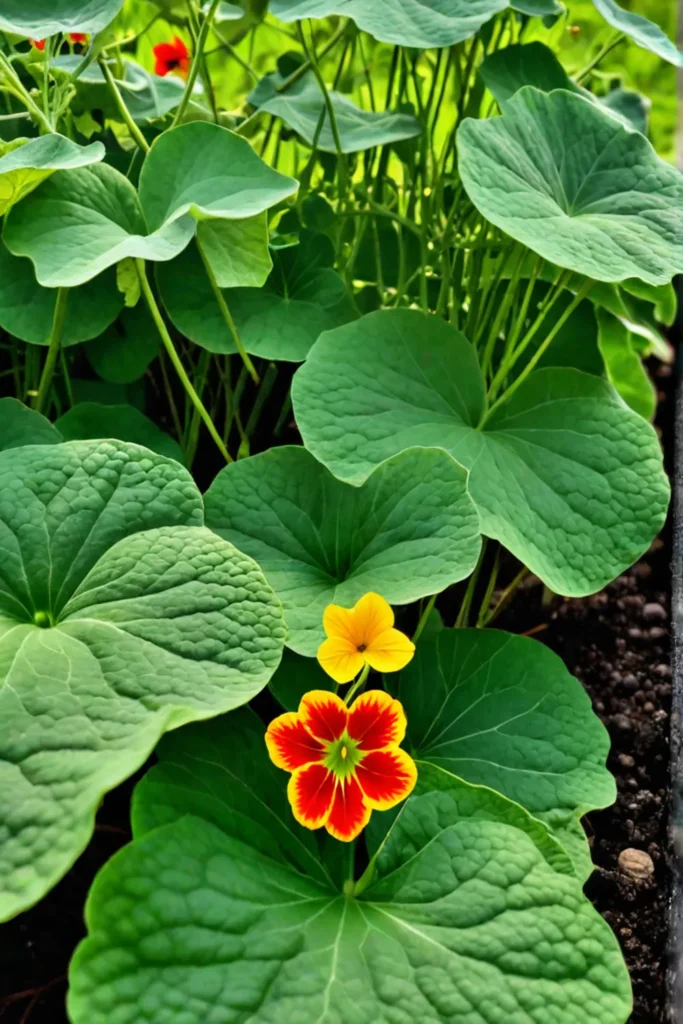
But the benefits of this pairing don’t stop there. Nasturtiums also attract beneficial insects like ladybugs and lacewings, which feed on pests that otherwise harm your cucumber plants. It’s a win-win for your garden’s ecosystem.
Planting nasturtiums around the base of your cucumber plants or allowing them to trail up trellises and fences can effectively keep your cucumbers healthy and thriving. Plus, the edible flowers and leaves of the nasturtiums can add a unique, peppery flavor to your salads and other dishes, providing an additional culinary benefit.
Borage and Strawberries: A Pollination Powerhouse
Last, let’s talk about the dynamic duo of borage and strawberries. This pairing is a true pollination powerhouse, offering a range of benefits to your garden.
Borage is a versatile herb that’s known for its ability to attract bees and other pollinators. By planting borage around the perimeter of your strawberry bed or interspersing it throughout the planting, you can help ensure that your strawberry flowers are properly pollinated, leading to a bountiful harvest of juicy, flavorful berries.

But the benefits of this pairing don’t stop there. Borage also has a shallow root system that can help loosen the soil, particularly beneficial for shallow-rooted strawberry plants. This improved soil structure can lead to healthier, more vigorous growth for your strawberries.
And let’s not forget the added culinary benefits of borage. The leaves and flowers of this herb have a delightful, cucumber-like flavor that can be used in salads, drinks, and other dishes. It’s the perfect way to add a touch of freshness and elegance to your homegrown fare.
Conclusion
Companion planting is a powerful tool for creating a thriving, high-yielding vegetable garden. By strategically pairing plants that offer mutual benefits, you can harness the natural synergies between species to reduce pests, attract pollinators, and improve soil health.
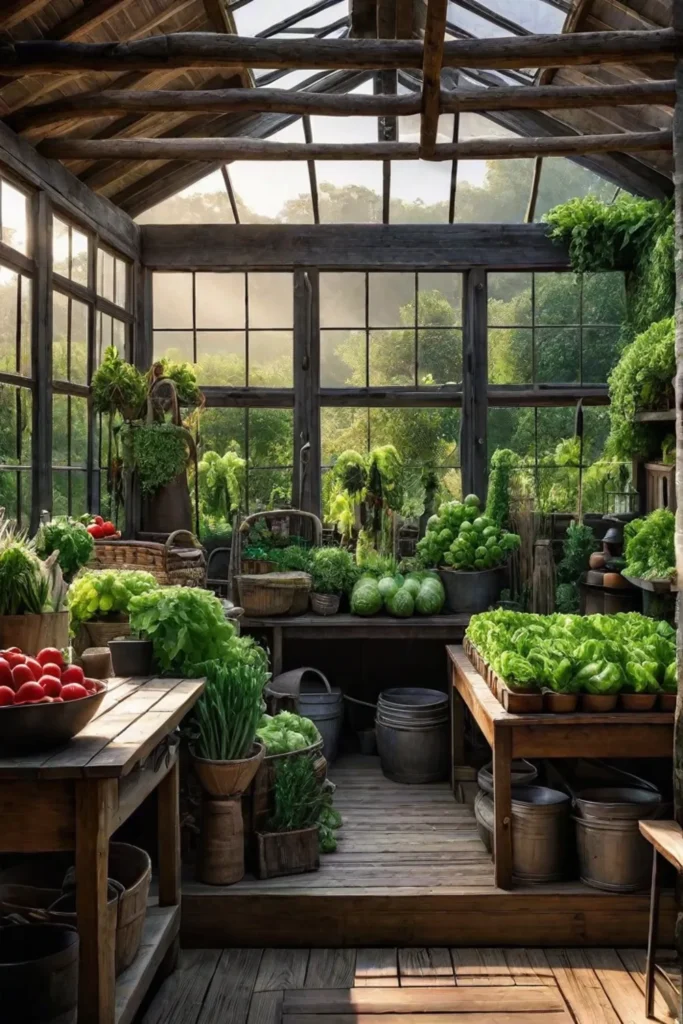
Whether you’re a seasoned gardener or a newcomer to vegetable growing, these five companion planting pairs are a great place to start. From the classic tomato and basil duo to the pollination powerhouse of borage and strawberries, each pairing offers unique advantages that can help you maximize your garden’s potential.
So why not give companion planting a try? With a little bit of planning and a lot of Southern charm, you can create a vegetable garden that’s beautiful, bountiful, and sustainable. Happy planting!
